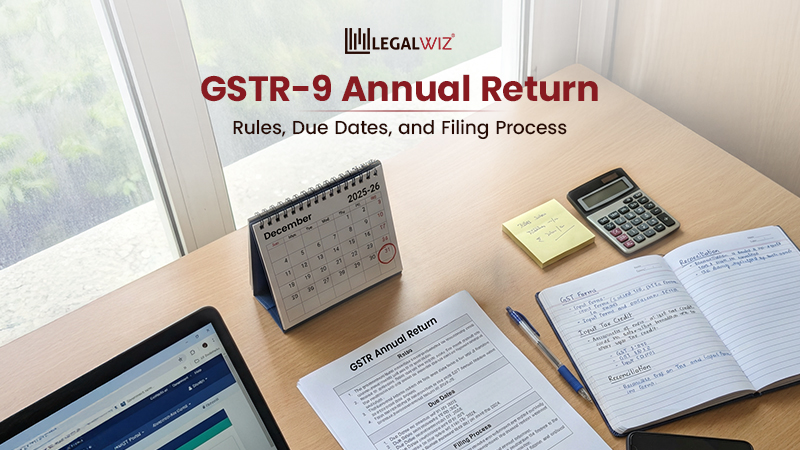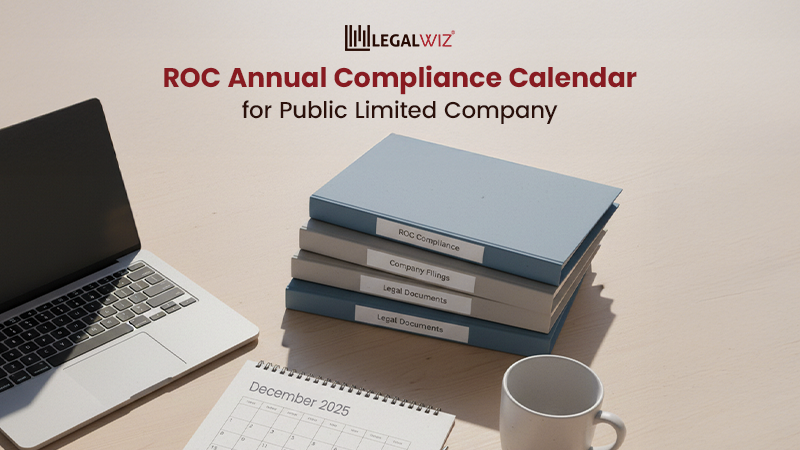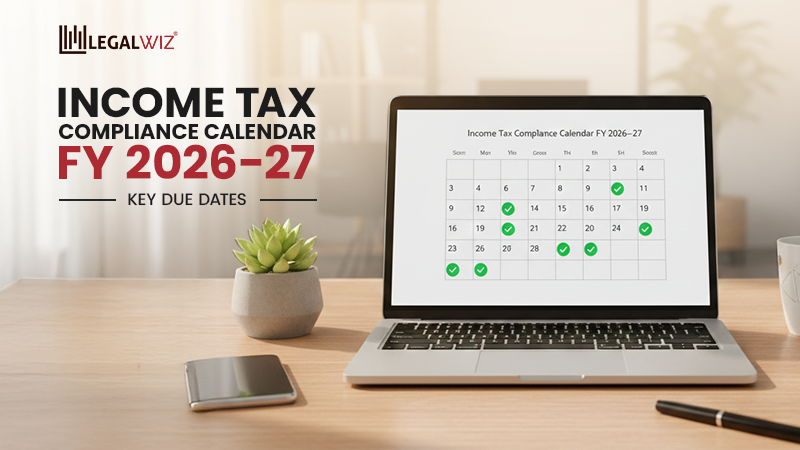Form ADT-1 for Appointment of Auditor: Due Date, Filing & Late Fees
After concluding its Annual General Meeting (AGM), a company must notify the Registrar of Companies (ROC) about the appointment of an auditor or any changes to the existing auditor. Form ADT-1 serves this purpose.
Filing this form ensures your annual compliance for a company under the Companies Act, 2013, which mandates that all companies formally inform the ROC whenever they appoint a new auditor or replace an existing one. This blog explains the importance of Form ADT-1, its filing process, and key compliance points, helping companies avoid penalties and stay audit-ready with clarity.
What is the Form ADT 1?
Form ADT-1 is a statutory return filed by companies with the Registrar of Companies (RoC) about the appointment of a company’s auditor. It must be filed within 15 days of the appointment to stay compliant with the Companies Act, 2013.
As per the latest Companies (Audit and Auditors) Amendment Rules, 2025, effective from July 14, 2025, filing Form ADT-1 is mandatory for all first auditor appointments, including those made by the Board of Directors.
The form includes details such as the auditor’s name, consent, and company information. Timely filing is essential, as delays can attract penalties. Under Section 139(1) of the Companies Act, 2013, this form must be submitted every year after the AGM in which the auditor is appointed, ensuring compliance with the law and maintaining financial transparency within the company.
Companies must hold their Annual General Meeting (AGM) within the timelines prescribed under the Companies Act. Understanding the maximum permissible gap between two AGMs is crucial to compliance. Read the full blog here: ROC AGM Extension: Maximum Time Gap Rules Explained
Purpose of Appointing an Auditor
An auditor is responsible for reviewing a company’s accounts, ensuring compliance with laws, and reporting the true financial position to the board. Their role safeguards the company’s stability and protects shareholders’ interests by providing an independent, objective opinion on the company’s finances.
To understand the complete process and legal requirements for appointing an auditor, read our detailed guide here: Appointment of Auditor: A Comprehensive Guide
Procedure for Appointment of an Auditor
Understanding the appointment of an auditor is crucial for every company, as it ensures legal compliance, financial transparency, and protection of shareholders’ interests.
| Type | Who Appoints | Timeline | Tenure |
| First Auditor | Board of Directors (If not, Members via EGM) | Within 30 days of incorporation (Board)/90 days (Members) | Holds office until close of first AGM; Form ADT-1 filing optional |
| Government Companies | Comptroller & Auditor-General of India (or Board if not appointed) | Within 60 days (CAG)/next 30 days (Board) | Holds office until close of the first AGM |
| Subsequent Auditors | Members of the company | After AGM | Holds office until the conclusion of the 6th AGM after appointment |
Key Points on Appointment of Auditor:
- The appointment of the first auditor is either by the Board or Members, while all subsequent appointments are made by the company’s members.
- Only a practising Chartered Accountant can serve as an auditor.
- Written consent and a certificate confirming compliance with Section 141 of the Companies Act, 2013, are mandatory before appointment.
- The appointment of auditor must be conveyed to the Registrar of Companies within 15 days using Form ADT-1.
- Every AGM should ratify the auditor’s appointment for compliance and transparency.
Remember, appointing an auditor is a crucial part of a company’s annual compliance. Learn everything about this process in our detailed blog: Audit – An Imperative Process for Company Annual Compliance
Who Needs to File Form ADT-1?
The responsibility for filing Form ADT-1 rests entirely with the company, not the auditor. Every company that appoints or reappoints an auditor must ensure the form is filed with the Registrar of Companies (RoC) within the prescribed timeline.
Entities Required to File Form ADT-1:
- All Types of Companies:
- Listed and unlisted companies
- Public and private limited companies
- One Person Companies (OPCs) and other registered entities
- Newly Incorporated Companies:
- Companies must file Form ADT-1 after appointing their first auditor, whether the appointment is made by the Board of Directors or by the members.
- Companies Filling a Casual Vacancy:
- If an auditor is appointed to fill a casual vacancy (due to resignation, death, disqualification, etc.), the company must file Form ADT-1 to report the new appointment.
- Companies Appointing or Reappointing Auditors at AGM:
- Any company that appoints or reappoints an auditor at its Annual General Meeting (AGM) must file Form ADT-1 within 15 days of passing the resolution.
Note: An audit is mandatory for all companies, so filing Form ADT-1 is required in all cases, including appointments to fill casual vacancies. Filing ADT-1 is a crucial step in a company’s annual audit compliance, officially informing the authorities that the auditor has been legally appointed to conduct the audit.
Form ADT-1: Filing Due Dates and Timelines
For Newly Incorporated Companies:
- Must file Form ADT-1 within 15 days of their first board meeting.
- The first board meeting is required within 30 days of incorporation, with the agenda including the appointment of an auditor.
- Effectively, newly incorporated companies have a maximum of 45 days from incorporation to file their first ADT-1.
For example, if a company is incorporated on 30th August 2025 and holds its first board meeting on 3rd September 2025, the ADT-1 filing deadline would be 18th October 2025.
For Existing Companies:
- Form ADT-1 must be filed within 15 days of the AGM where the agenda includes appointing or re-appointing the auditor.
For example, if the AGM is held on 30th September 2025, the ADT-1 filing deadline would be 14th October 2025.
Documents Required to File Form ADT-1
To file Form ADT-1 with the Registrar of Companies, the following documents must be attached:
- Board Resolution or AGM Resolution: Copy of the resolution approving the appointment of the auditor.
- Auditor’s Written Consent: Confirmation from the auditor agreeing to the appointment.
- Auditor’s Certificate: Declaration stating that the auditor is not disqualified or ineligible under Section 141 of the Companies Act, 2013.
- Intimation to Auditor: Copy of the notice given by the company to the auditor regarding their appointment.
These documents ensure that the auditor’s appointment is legally valid and fully compliant with the Companies Act, 2013.
How to File the ADT-1 Form?
Form ADT-1 is an e-form that must be filed by companies on the Ministry of Corporate Affairs (MCA) website.
- Download the Form:
- Access the MCA website and download Form ADT-1 from the company forms download page.
- Access the MCA website and download Form ADT-1 from the company forms download page.
- Fill in Mandatory Information:
- Corporate Identification Number (CIN) of the company
- Nature of the auditor’s appointment and audit period
- Auditor’s PAN number and address (or auditor firm details)
- Auditor’s membership number (or firm registration number)
- Note: Clicking the ‘Pre-fill’ button in Section 1 automatically fills most company details. You can manually edit any field if required.
- Attach Documents:
- Upload scanned copies of all required supporting documents (board resolution/AGM resolution, auditor’s consent, auditor certificate, intimation to auditor).
- Upload scanned copies of all required supporting documents (board resolution/AGM resolution, auditor’s consent, auditor certificate, intimation to auditor).
- Sign the Form Digitally:
- The form must be signed by an authorized director using a Digital Signature Certificate (DSC).
- The form must be signed by an authorized director using a Digital Signature Certificate (DSC).
- Check for Errors:
- Click the ‘Check Form’ button to identify missing mandatory fields or errors.
- If errors appear, use the ‘Modify’ button to make corrections and recheck until no errors remain.
- Pre-Scrutiny:
- Click the ‘Pre-Scrutiny’ button to verify the accuracy of the form’s contents. Ensure it returns error-free results before submission.
- Click the ‘Pre-Scrutiny’ button to verify the accuracy of the form’s contents. Ensure it returns error-free results before submission.
- Submit the Form:
- Once error-free, click ‘Submit’. The form is auto-approved by the MCA.
- Upon successful filing, a confirmation email is sent to the company’s registered email ID.
Filing Fees for MCA Form ADT-1
The filing fees for Form ADT-1 with the Registrar of Companies (RoC) depend on the nominal share capital of the company:
| Sl. No. | Nominal Share Capital | Fee (INR) |
| 1 | Less than ₹1,00,000 | 200 |
| 2 | ₹1,00,000 – ₹4,99,999 | 300 |
| 3 | ₹5,00,000 – ₹24,99,999 | 400 |
| 4 | ₹25,00,000 – ₹99,99,999 | 500 |
| 5 | ₹1,00,00,000 or more | 600 |
Penalties for Non-Filing or Delayed Filing of Form ADT-1
There are heavy penalties imposed for non-filing of ADT-1
| Sl. No. | Delay (Days) | Penalty |
| 1 | Up to 15 | 1× normal fee |
| 2 | 16–30 | 2× normal fee |
| 3 | 31–60 | 4× normal fee |
| 4 | 61–90 | 6× normal fee |
| 5 | 91–180 | 10× normal fee |
| 6 | More than 180 | 12× normal fee |
Filing your ADT-1 is a mandatory compliance requirement that every company should ensure they do not miss out on to avoid heavy penalties.
Key takeaways:
- Companies with share capital under INR 1,00,000 pay a fee of INR 200; fees increase progressively with higher capital.
- Timely filing is crucial, as delays multiply the fees significantly, with penalties going up to 12 times the normal fee for delays beyond 180 days.
Final Thoughts: Filing Form ADT-1 Is Mandatory
Filing Form ADT-1 is a legal requirement for every company whenever an auditor is appointed or reappointed, including appointments for casual vacancies. While filing for the first auditor is not strictly mandatory, it is recommended for good compliance practice. The form must be submitted within 15 days of the appointment, and the responsibility lies solely with the company—not the auditor.
At Legalwiz, we simplify the annual compliance process for companies, ensuring the timely and accurate filing of Form ADT-1, so you can stay compliant without the hassle.
Frequently Asked Questions
What is form ADT-1?
Form ADT-1 is a form that all companies are required to file to intimate the ROC whenever they appoint an auditor (exception: appointment of 1st auditor).
Do One Person Companies have to file ADT-1?
All companies, including OPCs, are required to file ADT-1 whenever they appoint a new auditor (exception: appointment of 1st auditor).
Does the company Auditor have to file ADT-1?
No, it’s the responsibility of the company to file ADT-1, not the auditor. This is a company filing regarding the auditor; hence, it’s the responsibility of the company.
Can a company file ADT-1 after the deadline?
Yes, but late filing attracts penalties calculated as multiples of the normal fees. The longer the delay, the higher the penalty.
Who can sign Form ADT-1?
The form must be signed digitally by an authorized director of the company using a Digital Signature Certificate (DSC).
Is Form ADT-1 required for auditors of foreign companies operating in India?
Yes, if a foreign company has a registered branch in India and appoints an auditor under Indian laws, Form ADT-1 must be filed with the RoC.

Sapna Mane
Sapna Mane is a skilled content writer at LegalWiz.in with years of cross-industry experience and a flair for turning legal, tax, and compliance chaos into clear, scroll-stopping content. She makes sense of India’s ever-changing rules—so you don’t have to Google everything twice.







